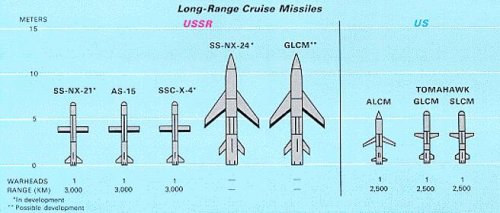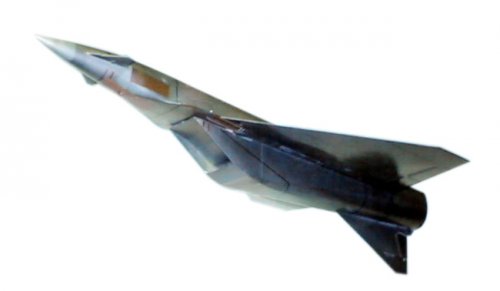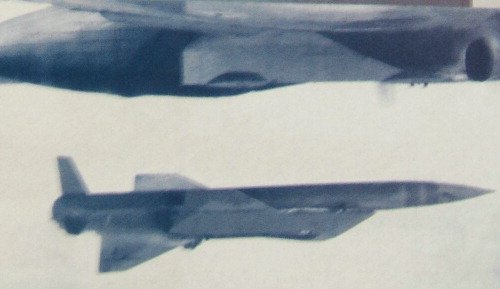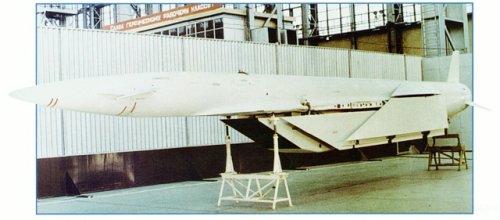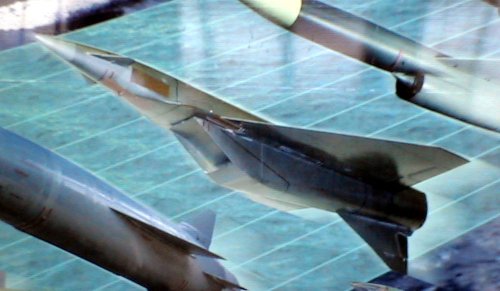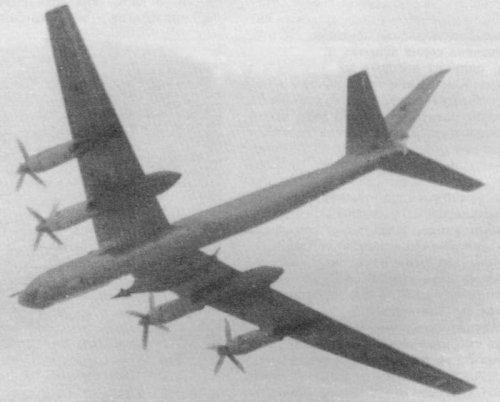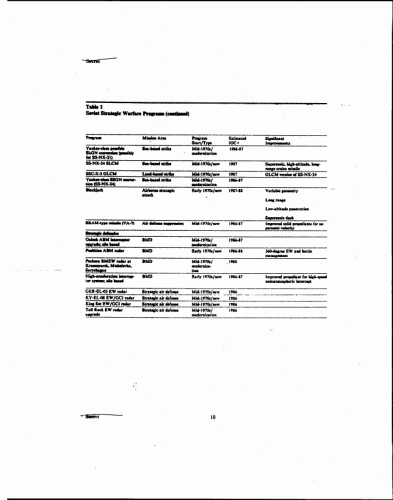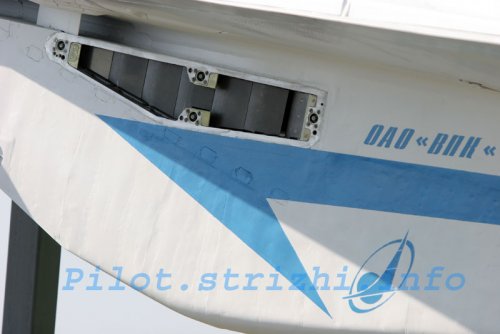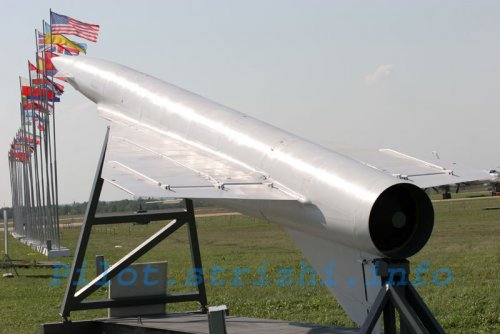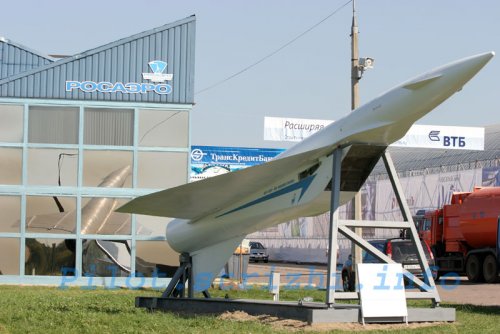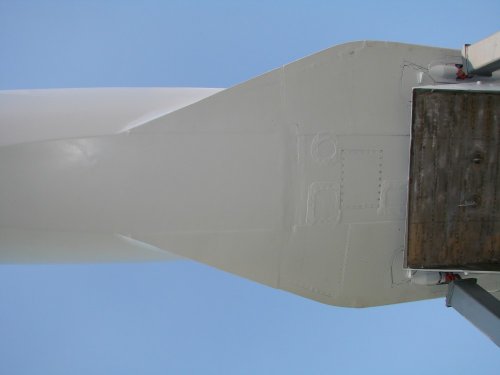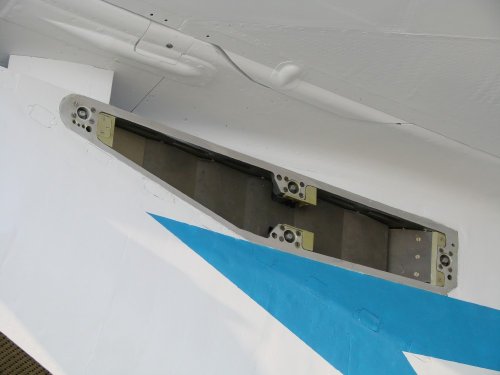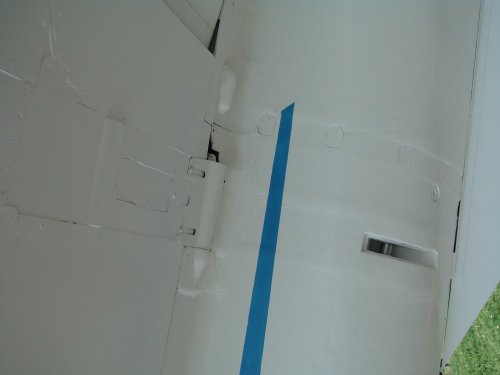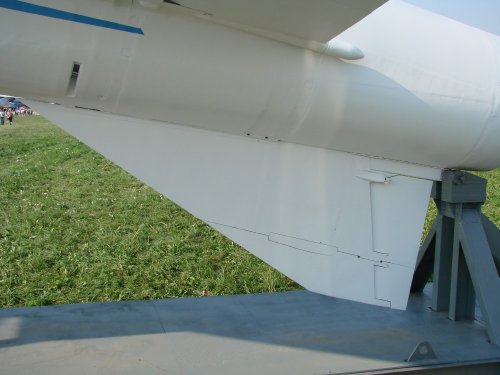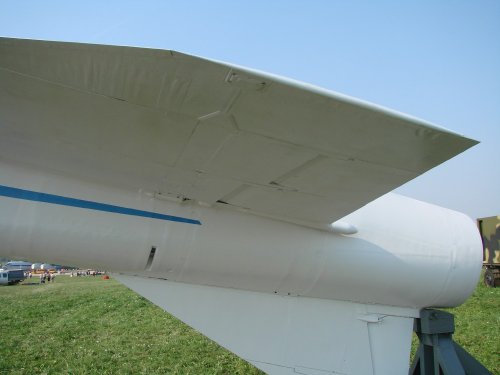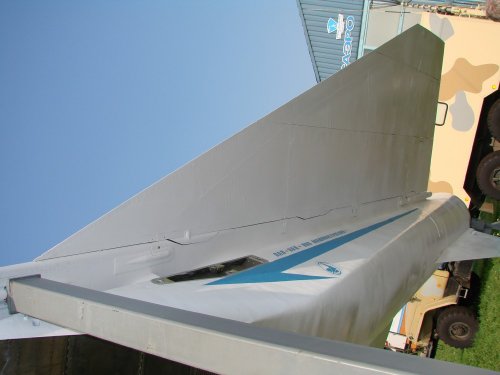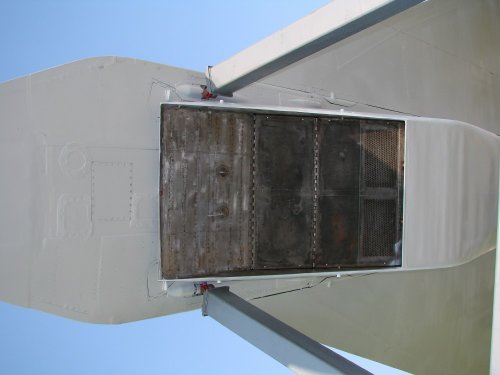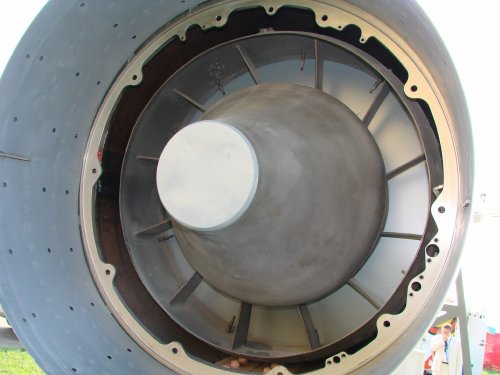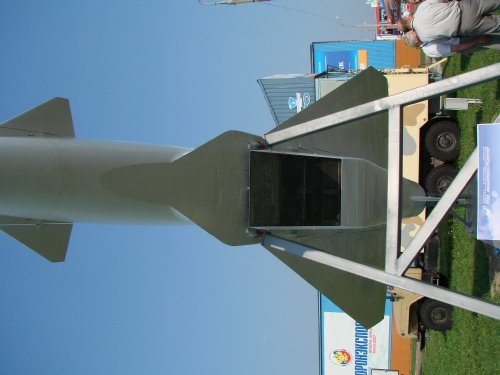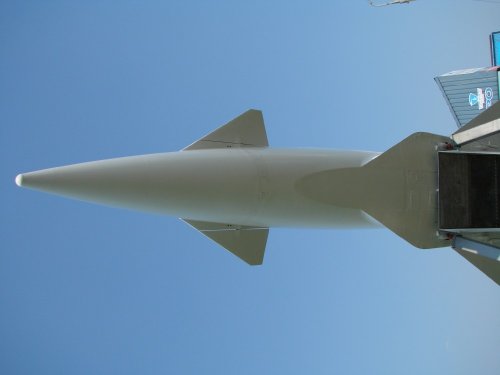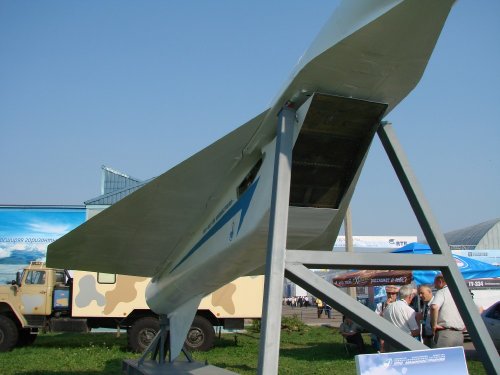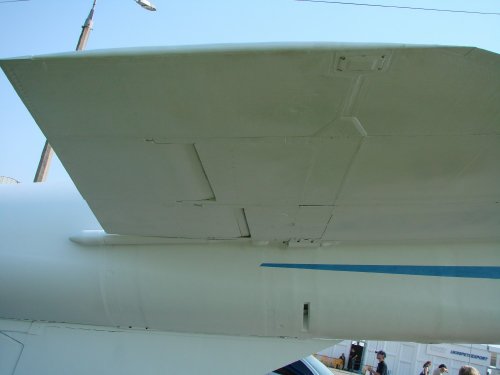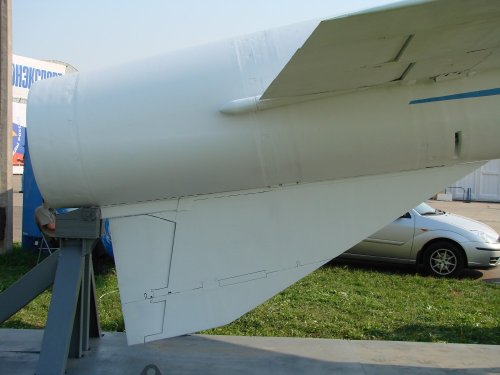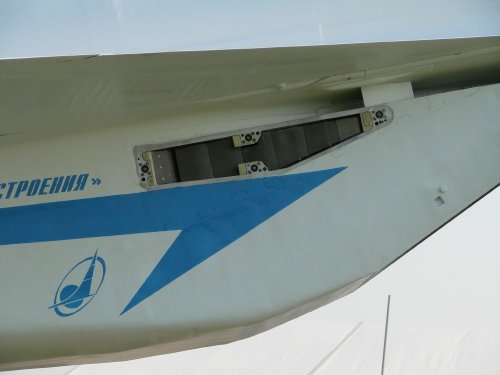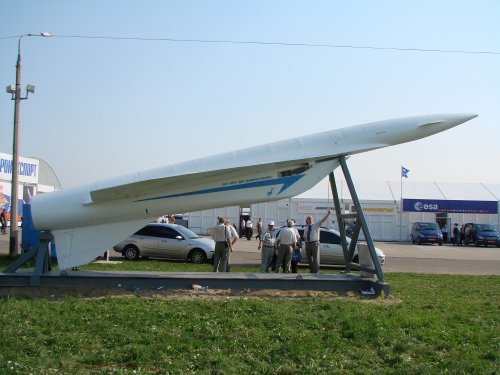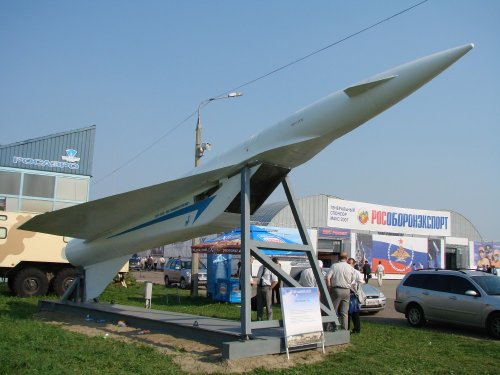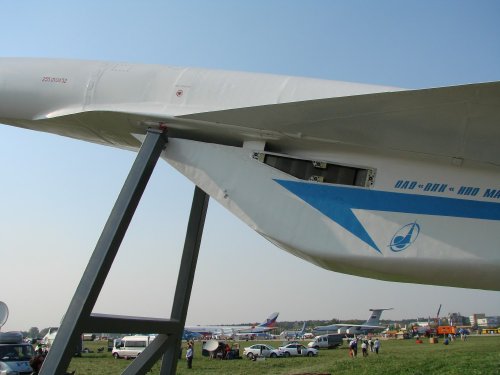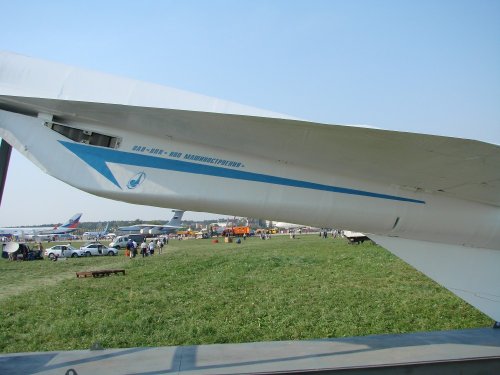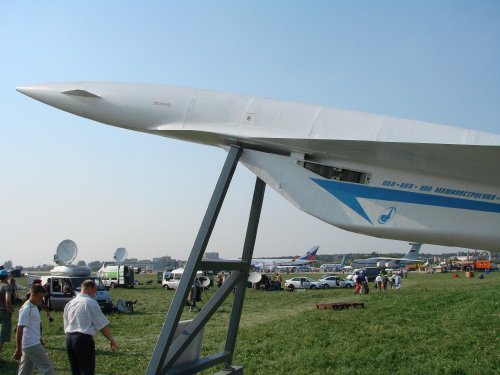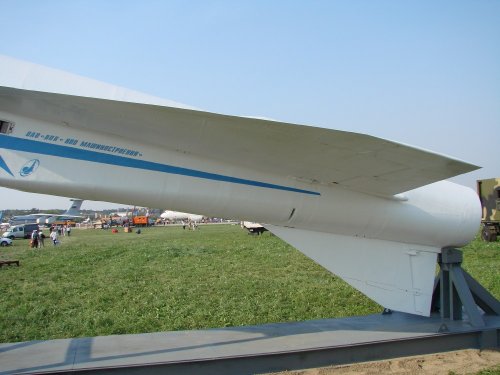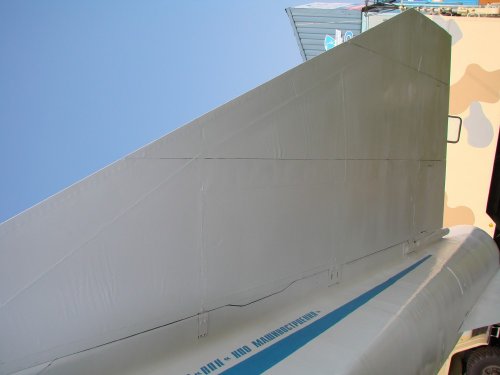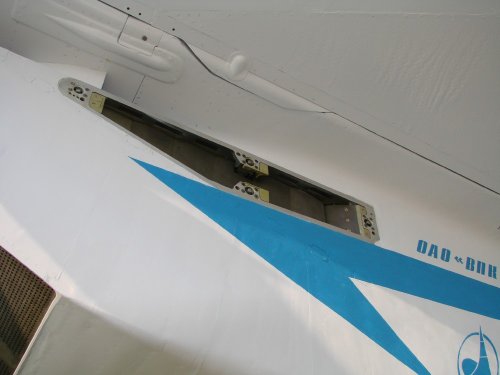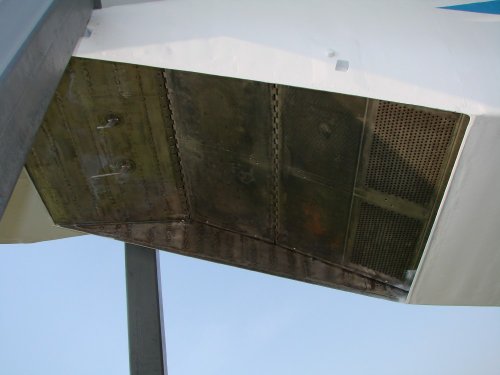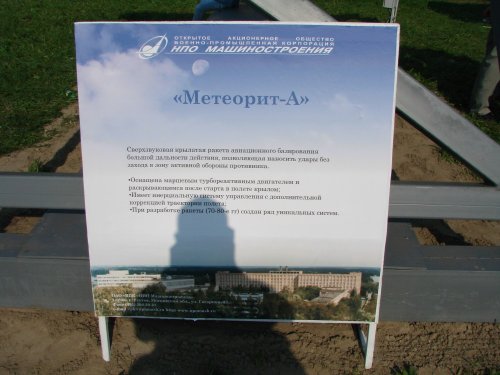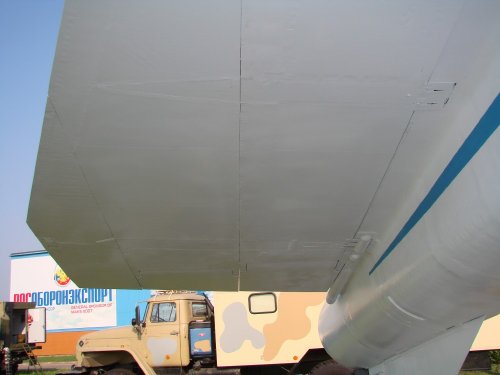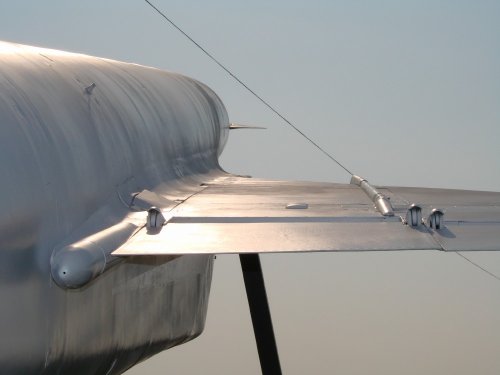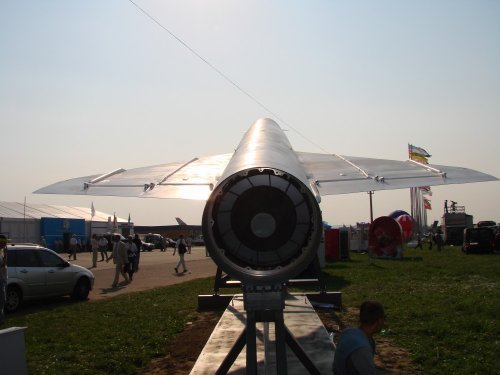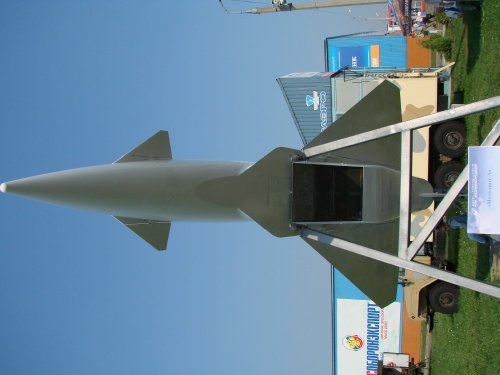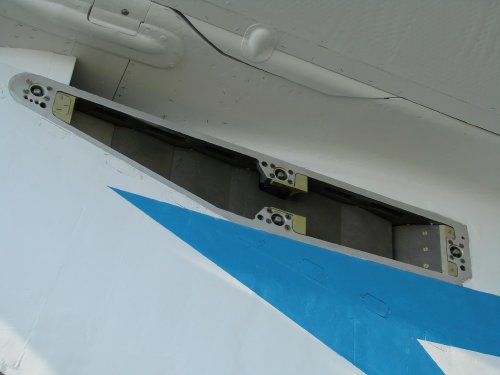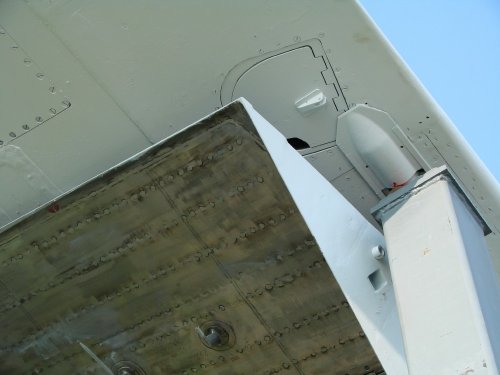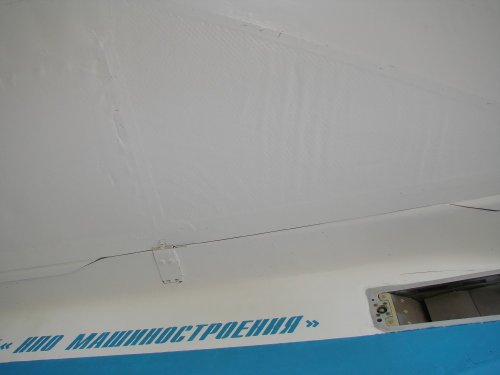3M-25 meteorit (P-750)
the strategic universal rocket
In the middle 70s V. N. Chelomei it returns to the idea of the creation of strategic cruise missile. At the end 50- X OF THE USSR and USA already forewent this undertaking in favour OF MBR, since KR, flying at a high altitude, could not overcome PVO - AIR DEFENCE of enemy.
On 9 December of 1976 g. left the decision S about the development of the universal strategic cruise missile of 3M-25 Meteorit in TSKBM. By the same PSM was assigned the development of subsonic KR Kh-55 in BAR “Raduga”.
Was created the fundamentally new class of sea strategic armaments - supersonic (M 2.5-3.0) KR with the distance of more than 5000 km the selection of distance was determined by the tendency to avoid the approach of the underwater of boat- medium into the zone of the active antisubmarine defence OF THE USA. Furthermore, it was necessary to destroy the territory of enemy at the sufficiently large depth.
Rocket had to be launched from the above-ground launchers, the nuclear-powered submarines 949M and strategic bombers Tu-95 and Tu-160.
The universal strategic OF KR “Meteorit” had to have a cruise speed and a flight altitude practically the same as KR 1950s - “Navaho”, “Burya”, “snow-storm”. But in contrast to them the inertial system for control was augmented by the radar system of correction on read area relief. With the creation of rocket were found many original technical decisions, which ensure endurance flight KR at height more than 20 c.c. with the velocity of more than 3500 km/h. Rocket had a complex of overcoming PRO. Large sizes determined significant EPR, but defence KR had to become not only velocity and the height, but also the special equipment, which created after the winged missile the long tail of ionised air, which impedes the exact induction of surface-to-air missiles (Plasma Stealth technologies).
The preliminary design of complex developed in 1977 g. as the media it was intended to use the submarines of Pr.949, modernised on the rest of 949M. However the design studies, which executed LPMB “ruby” together with TSKBM, they showed that for positioning the rockets of 3M-25 in the launch cannisters of missile complex “Granit” is necessary a radical change of constructing the rocket in view of its large length, but it will be necessary to increase the length of ship on 5-7 m. of a attempt at the creation of the standardised equipment for both complexes by success they did not crown for the installation of the second set of equipment for control.
Structurally rocket was executed according to canard configuration. March step had the swept folding wing and well-made vertical tail assembly. It is equipped with the sustainer turbojet engine of development KB of Ufa motor-building strategic formation. The air duct of sustainer engine is placed below fuselage.
The sea and surface versions of the rocket “Meteorit” were additionally equipped with two starting liquid boosters, but air version “Meteorit-A” did not have them.
The missile-firing distance “Meteorit-A” composed to 5000 km the height of sustained flight - 22-24 km with the velocity of approximately 3000 km/h.
The first test starting “Meteorit” from the ground stand took place on 20 May of 1980 g. rocket it did not move out the container and it partially broke. Those following 3 startings were also unsuccessful. Only on 16 December 1981 g. rocket flew about 50 km.
Here, what writes about the flight tests of cruise medium-range missile “meteorite” Yu. Of [mozzhorin] - whereas with the first testing, at the moment of the squad of the boosters, cruise missile overturned and fell. All data about aerodynamics of rocket put out TsAGI. Reason for accident - neglect of influence on the behaviour of the rocket of the jets of the low powder runners, which discharge from it the worked out boosters. The jets of runners distorted the nature of flow it was wing rocket, causing the strong moment of its listing.
The ship tests of complex initially it was intended to conduct with one of the submarines of Pr.675, but subsequently, at the sentence OF LPMB “Ruby”, was made the decision to re-equip for this purpose one of RPK STHENE Pr.667A, deduced from the composition of the strategic forces by agreement OF OSV-1, keeping in mind not only carrying out on this PL of tests, but also the subsequent operation of boat as combat unit. For the reequipment isolated PL K-420 (head of №432), on which rocket compartments were cut out and annihilated and the associated repair was executed. Construction plant was designated [Sevmashpredprijatie].
Engineering design of reequipment APL the rest of 667A for missile complex “Meteorit-M” (Pr.667M) LPMB “Ruby” developed in 1 quarter 1979 g. by project it was provided for the arrangement of 12 launch cannisters with the rockets of 3M-25, located [pobortno] out of the durable corps - in the [mezhdubortnom] space at angle of 45”. For this it was necessary to form the new average unit of the corps of the instead of cut out rocket compartments of base [PL], to increase the length of ship approximately on 20 m and width to 15 m, which led to a change in the architectural configuration [PL] after reequipment. In the new compartments was accomodated the equipment for prelaunch servicing procedure and starting “clover”, equipment for control of the ship systems of daily and prelaunch maintenance (AU KSPPO) “Hawk-44”, pneumo-hydraulic system [KSPPO], and also habitable and public- everyday crew compartments.
A certain recomposition they produced also in the central station in connexion with the installation of the new system for control of the complex of rocket weapon “Andromeda”, new navigation complex “TOBOL- AT”, the complex of radio communication equipment “Molniya-LM1” and the hydroacoustic complex “Rubikon”. With the target of the retention of boat in the starting corridor with the volley aire they installed the system of control “Bohr”.
Work on reequipment and repair [PL] conducted [Sevmashpredprijatiem] by exceptionally rapid rates. Thus, on 18 June of 1980 g. boat was supplied to covered slip, narrower than on 15 October of 1982 g. completely formed [PL] went down to the water, and from 1 November of 1982 g. through 4 August of 1983 g. it was past tie-down and plant road tests. Official tests were passed from 16 August of 1983 g. through 1 November of 1983 g., but without the complex of rocket weapon because of its lack of preparation to the flight design tests aboard ship. The report about the termination of the reequipment of boat for the carrying out of joint testing of complex was designed according to the results of State tests.
The performance of rockets by starting from the ground stand (firing range Of kapustin steep bank) and plavstenda PSK in the Black sea occurred in parallel with the reequipment of ship. In all according to the program of flight design tests from the stands in 1982-1987 yr. were carried out more than 30 launches of the rockets of 3M-25. Although already on 27 December of 1983 g. in the Barents sea were begun the flight design tests of complex with PL, they continued at 1986 g. inclusively (one starting in 1984 g. and one starting in 1986 g.).
The reasons for so prolonged a performance of complex there were several, but the large number of fundamentally new technical decisions, accepted in the project, was, perhaps, principal: “wet” underwater start of cruise missile under the starting- starting step, inertial guidance system with the correction on the radar actual charts area, multifunctional complex of defence and all other these progressive decisions required thorough experimental performance, which led to the repeated repeated tests and, correspondingly, to the multiple transfers of the periods of delivery.
The as a result joint (official) tests of complex “Meteorit-M” began only in 1988 g., first from the ground stand (4 starting), and then with PL (3 of starting). Unfortunately, the number of successful starting in all stages of tests approximately corresponded to the number of unsuccessful, since complex was not nevertheless brought to “the mind”. This circumstance, and also need for building the special-purpose media, led to the fact that on the joint decision of industry and VMF of work on the complex “Meteorit-M” at the end 1989 g. they ended. The ship unit of complex they transmitted to the critical storage to personnel PL, and they put boat itself in 1990 g. to fleet in the torpedo version.
For the tests of aviation version series Tu-95MS №04 was modernised into the carrier aircraft two KR “Meteorit-A”. Rockets were accomodated on the special pylons under the wing, which left free bomb bay. In it, in the limits of the stipulated loads, it was possible to place six antiradar missiles OF THE Kh-15P.
The first starting Tu-95MA on 11 January 1984 was unsuccessful. Rocket flew entirely “not to that steppe” and to 61-[j] to second it was self-liquidated. The following air starting Tu-95MA took place on 24 May of 1984 g. with the same result. Again it was necessary to self-liquidate rocket. At the end 1984 g. of work according to the aviation version “Meteorit” were ended. KR X -55 by this time has already been carried out in series.
Surface strategic complex “Meteorit” (SSC-X-5) it was found in the development.Those developed for the complex “Meteorite” of Stealth- technology was further developed.
Description
Developer TSKBM
Designation the complex “Meteorit-A” P -750 “Meteorit-M” “Meteorit”
the rocket 3M25A 3M25
Designation NATO AS-X-19 SS-NX-24 “Scorpion” SSCX-5
First starting 11 January 1984 26 December 1983 20 May 1980
Type [GSN] inertial and radar with the system of correction on area relief
Geometric and mass characteristics
Length, m 12,8 (12,5-13)
Span of wing, m
Diameter, m
Launching weight, the kgf with the boosters 12650
without the boosters 6300 (4500) 6380
Type of the warhead special
Mass BCH, kgf 1000
Power plant
Sustainer engine TRD TURBOJET ENGINE
Thrust, kG (kN)
The booster LIQUID PROPELLANT ROCKET ENGINE
Flight-performance data
Velocity, km/h (V=) 3000 (2,5-3) 3500
Launching range, km 5000 (3000) it is more than 5000
Duration of flight, 1h
March flight altitude, m 22000-24000
Information sources:
“The history of air armament” A. B. Of Shirokorad, 1999/
“Tu-95” s. Moroz
“So this was…” Yu. Mozzhorin
“Rocket weapon 1947-2000” M. A. Pervov
Cruise missile “thunder” A. V. Karpenko, “Bastion”
Re-equipment of the missile-carrying atomic submarines of the project of 667A submarine fleet OF THE USSR and Russia
RPKSN the project of 667A, 667AU, 667AM (“navaga”, “burbot”) and their modification. TTKH
Project of 667M
Submarine K-420. the historical information
Battle for the skies M. Kalashnikov

